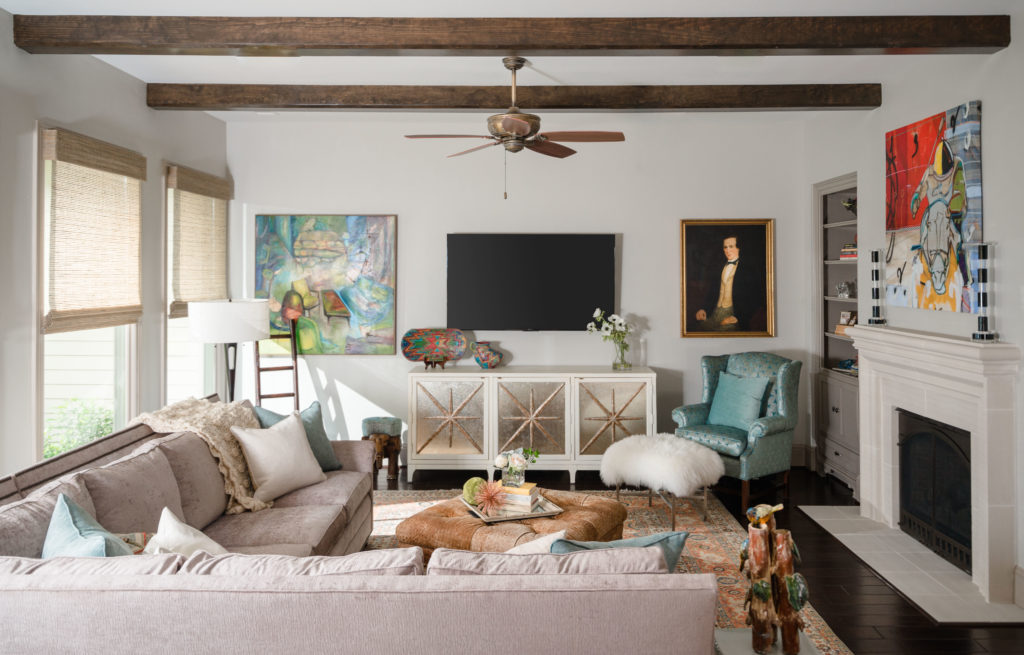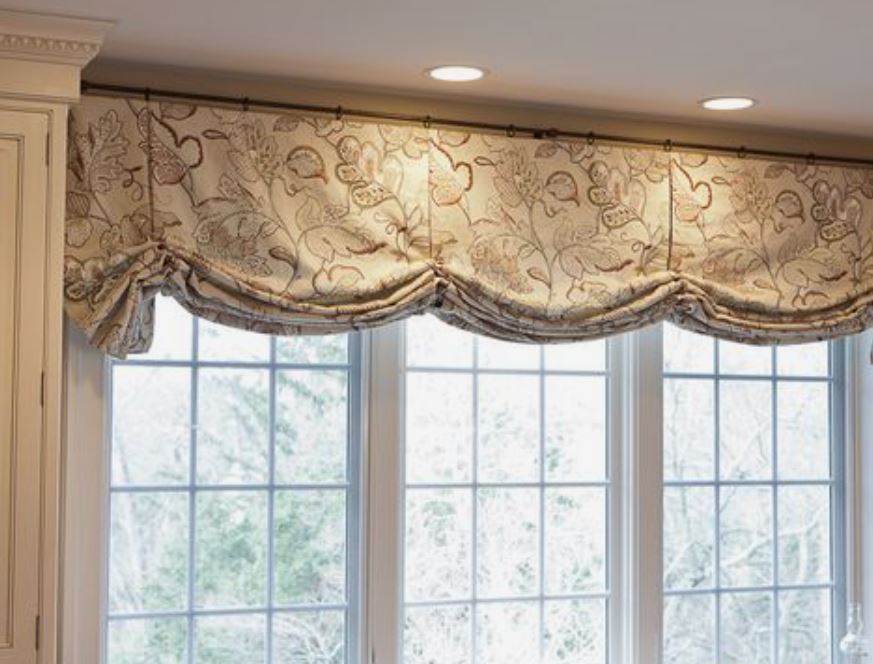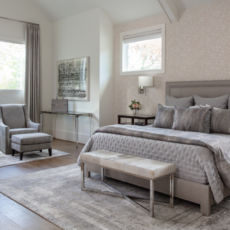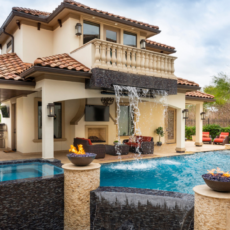Curtains, drapes, blinds, shades … so many design choices
Window treatments are like beautiful gift wrap and ribbon on a treasured present. So often, homeowners spend a lot of time and investment on building a new house or remodeling an existing home but push off selecting curtains. We’re firm believers in the importance of window treatments of some sort and there are plenty of options. In this article, we review the types of window treatments, the different purposes each fulfills and common mistakes to avoid.
First, do you know the difference between curtains, drapes and blinds? While both curtains and drapes use fabric that’s hung vertically to add a decorative element to a room, the two are technically not the same. Curtains are typically made of a lighter fabric, are not lined and are used for privacy. This makes curtains ideal for common areas like a living room. In contrast, drapes often consist of heavier fabric, tend to be lined and not only dress up a room but can also be used to block the sun, streetlights or noise. Drapes are ideal for bedrooms but could be used in a variety of spaces. A third choice is blinds, which are made of a solid material such as wood or plastic. Blinds can be raised or lowered and can be opened to allow more sunlight in or closed to block the light out. We often couple blinds with curtains to give clients the ability to easily control light and soften the look of the overall space with the right fabric.
Possibilities for customizing your window treatments are endless. Take blinds for instance. Our friends at The Shade Store offer blinds made of bamboo, mahogany, oak, and pine, as well as some modern, stylish metal blinds. Crisp white/blanc blinds look nice in a minimalist setting, while a traditional wood tone would work well in a rustic ranch house.
There is an equal number of factors to consider with blinds as well. The style of shade is one aspect. There are:- Cellular shades use a hexagonal, honeycomb design made of a single continuous piece of fabric with two or more that form compartments that trap air inside.
- Pleated shades also use a honeycomb cellular structure but has just one layer of material. They do not have slats since they made of a continuous layer of fabric.
- Woven-wood shades are made from bamboo, jute, rattan or natural grasses that are woven into a material with natural variation and rich texture.
- Roman shades can be raised or lowered with the help of a cord system and rings sewn on the back of the fabric. When raised, the fabric stacks evenly in horizontal folds.
- Roller shades use a single sheet of fabric that can be raised or lowered based on a roller/tube that’s installed at the top of the window. Roller shades do not have slats or veins. They are available in a wide variety of colors.
- Solar shades are like roller shades but use a woven, screen-like material as the base. The loose woven material allows the shade to be transparent, which is nice when you want some light to flow into the room. The defining characteristic of a solar shade is the material blocks harmful UV rays and, thus, are only available in neutral colors.
There a several styles of draperies as well. Here’s a quick overview, thanks to Home Stratosphere’s “Curtain Buying Guide”.
- Panel pair curtains feature two separate curtain panels hung on one rod across the top of your window.
- As the name indicates, a single panel curtain uses a single panel of fabric that covers the entire window, although that same piece can be push to one side to allow light into the space.
- A valance is a short curtain that hangs at the top of your curtain and typically has a soft, flowy look.
- A cornice is similar to a valance but has a hard top, “meaning the fabric is often created by upholstering a board with no loose fabric hanging at the bottom. Made in various shapes and sizes, you can vary them with different fabrics or shapes depending on the look you’re going for,” according to Be Home Blinds Galore. Below is an example of a cornice.
Common Pitfalls to Avoid When Choosing Window Treatments
- Selecting fabric or materials without first seeing a sample is a mistake. While it does require more time and planning, it’s important to see and feel the fabric or material to be used in window treatments. Colors can be misleading online and in print. Touching the material allows you to properly evaluate the quality and see how it will look in your room. Take the time to get swatches upfront.
- Inaccurate window measurements can fit improperly, leaving gaps where they shouldn’t be. Incorrect measurements can also result in your curtains or drapes falling short, rather than resting just above the floor. (It’s like wearing high-water pants!) A proven interior designer knows how to measure windows properly to ensure your installed window dressing looks its best.
- Focusing on the style and ignoring the needed function of a window treatment can be problematic. A beautifully dressed window speaks volumes but if light or noise control remains a hindrance, the mood of the entire room can be thrown off.
- Not considering the risks to your children or pets can be dangerous. Pets want to see outside, and blinds are easily destroyed as pets paw at them to peer outside. Sadly, blinds can also strangle pets if your cat or dog gets tangled in them. Similarly, we guide our clients with young children away from window treatments with long cords as those can pose as choking hazards. Other options that can simply be pulled down like roller shades or the digitized window treatments like the ones we cover in “Design Trends for Windows & Window Treatments”.
- Leaving your windows bare is a guarantee for your space to look unfinished. Give your room the polish you want by having custom window treatments installed by a professional.
If you’re not sure which type of shade or blind you need, contact Pamela Hope Designs and we’ll be happy to guide you on the best options for your needs. If you enjoyed this article, you may also enjoy “Window Treatments Galore”.







